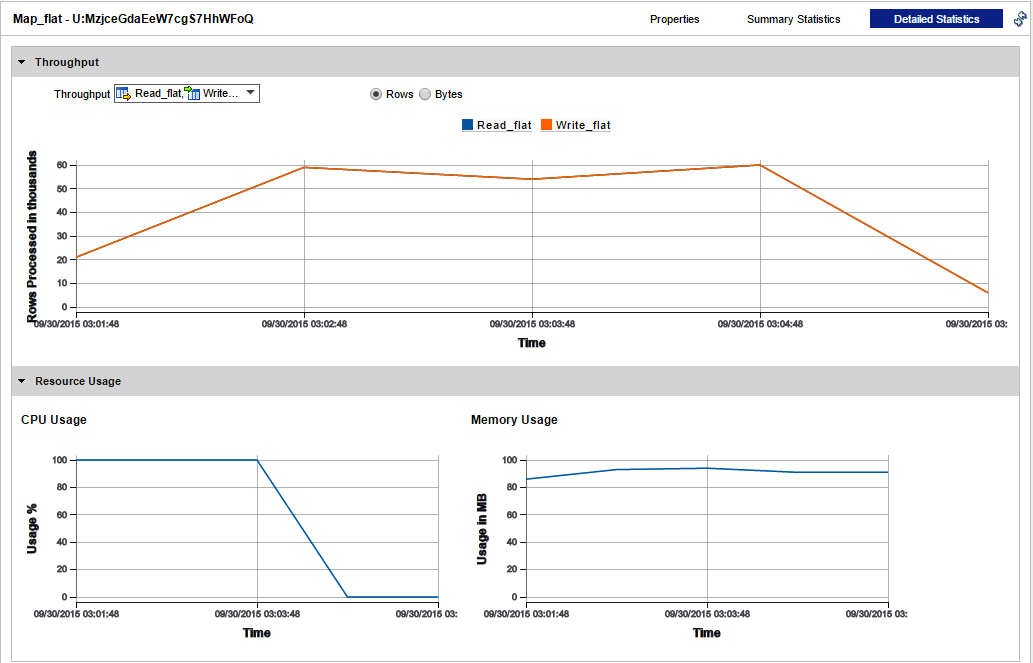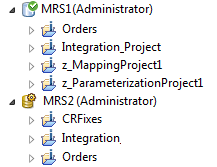Informatica Developer
This section describes new Informatica Developer features in version 10.0.
Create or Replace Target Tables
Effective in Informatica 10.0, you can create or replace tables from one database to another database by generating a DDL script. By using the Developer tool, you can generate a DDL script for one or more relational data objects in the Model repository, and run the DDL script to create or replace tables in the target database. If a target already exists in that database, you can drop the target and re-create it.
For more information, see the "Create or Replace Target Tables" chapter in the Informatica Developer Tool Guide.
Generate Relational and Flat File Metadata at Run Time
Effective in version 10.0, you can create mappings with dynamic sources and targets that allow metadata changes to the data sources. When you configure a source or target to be dynamic, the Data Integration Service can interpret metadata changes to relational and flat file data sources at run time.
The Data Integration Service can perform the following functions:
- •Read data from flat files or relational sources where the order of the columns in the source is different from that of the columns in the physical data object.
- •Read data from additional columns in flat files or relational sources that are not present in the physical data object.
For relational data sources, the Data Integration Service directly fetches the metadata changes from the database schema. When you connect to the following relational sources through ODBC, the Data Integration Service can read metadata changes from the sources at run time:
- •Greenplum
- •Hive
- •Netezza
- •Teradata
For flat file data sources, you must configure the flat file data object for the Data Integration Service to fetch the metadata changes from the data file header, a control file, or automatically from the columns in the data source. Configure the Generate Run-time Column Names property on the Advanced tab of the flat file data object.
When you develop a mapping, configure the Read and Write transformations to get data object columns directly from the sources and targets at run time. You can also configure the Lookup transformations to get data object columns directly from the lookup sources. Select At run time, get data object columns from data source on the Data Object tab of the transformation.
For more information, see the "Dynamic Mappings" chapter in the Informatica 10.0 Developer Mapping Guide.
Import from PowerCenter
Effective in version 10.0, you can import the following PowerCenter transformations into the Developer tool:
- •Normalizer transformation
- •Sequence Generator transformation
- •Update Strategy transformation
For more information, see the Informatica 10.0 Developer Mapping Guide.
Monitoring Tool
Effective in version 10.0, the Monitoring tool has the following new features:
- Execution Statistics view
- Contains the Navigator and views that were in the Monitoring tool in version 9.6.1.
- Summary Statistics view
- Displays resource usage, object distribution, and object states for a selected time range.
- Views on the Execution Statistics view
- You can view additional information about ad hoc mapping jobs, deployed mapping jobs, and mapping objects in workflows in the Execution Statistics view. When you select one of these objects in the contents panel, the details panel displays the following new views:
- - Summary Statistics view. Displays throughput and resource usage information for the source and target.
The following image shows the Summary Statistics view for a mapping job:
- - Detailed Statistics view. Displays graphs of throughput and resource usage information for the source and target. Appears for jobs that run in separate local processes for longer than one minute.
The following image shows the Detailed Statistics view for a mapping job in a workflow:
For more information, see the "Viewing Data" chapter in the Informatica 10.0 Developer Tool Guide.
Object Versioning
Effective in version 10.0, when the Model repository is integrated with a version control system, the version control system protects objects from being overwritten by other members of the development team. You can check objects out and in, undo the checkout of objects, and view and restore historical versions of objects.
The Developer tool depicts a versioned Model repository with a white icon decorated with a green check mark.
The following image shows two connected repositories: MRS1, which has been integrated with a version control system, and MRS2, which has not:
For more information, see the "Model Repository" chapter in the Informatica 10.0 Developer Tool Guide.
Physical Data Objects in an Application
Effective in version 10.0, you can add a physical data object to an application.
For more information, see the "Application Deployment" chapter in the Informatica 10.0 Developer Tool Guide.
Profiles
This section describes new Developer tool features for profiles and profile results.
Columns Profiles with JSON and XML Data Sources
Effective in version 10.0, you can use the following methods to create a column profile with JSON and XML data sources:
- •Flat File. In this method, you need to create a text file, and add the JSON or XML file source location into the file. Create a flat file data object with the text file. Create a column profile on the flat file data object.
- •Complex file reader. In this method, you create a complex file data object on the JSON or XML source file, and create a column profile with the complex file data object.
- •JSON or XML file in HDFS. In this method, you need to create a connection with HDFS, and create a complex file data object on the JSON or XML file in HDFS. You can create a column profile with the complex file data object.
- •JSON or XML files in a folder. In this method, you need to consolidate all the JSON or XML files into a folder. Create a connection with HDFS, and create a complex file data object with the folder. You can create a column profile on the complex file data object.
For more information about column profiles with JSON and XML data sources, see the "Data Object Profiles" chapter in the Informatica 10.0 Data Discovery Guide.
Decimal Data Type
Effective in version 10.0, you can create profiles with columns that have the Decimal data type with a precision of up to 38 digits.
For more information, see the Informatica 10.0 Data Discovery Guide.
Foreign Key Curation
Effective in version 10.0, when you reject an inferred column relationship, all the associated relationships are also rejected.
For more information about curation, see the "Enterprise Discovery Results" chapter in the Informatica 10.0 Data Discovery Guide.
JDBC Connectivity
Effective in version 10.0, you can specify a JDBC connection as a profiling warehouse connection for IBM DB2 UDB, Microsoft SQL Server, and Oracle database types. You can create column profiles, rule profiles, domain discovery, and scorecards with a JDBC connection.
For more information, see the Informatica 10.0Data Discovery Guide.
Object Versioning
Effective in version 10.0, when the Model repository is integrated with a version control system, the version control system protects objects from being overwritten by other members of the development team. You can check profiles out and in, undo the checkout of profiles, and view and restore historical versions of profiles.
For more information about object versioning, see the "Informatica Developer Profiles" chapter in the Informatica 10.0 Data Discovery Guide.


